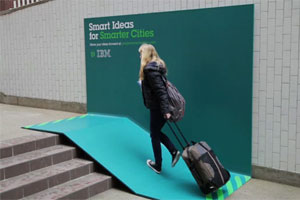What is the Curb-cut Effect?The ‘curb-cut effect’ describes the way that designing with accessibility in mind benefits everybody. While many people still view disability access as something it would be nice to have, but not a necessity, the curb-cut effect shows us that accessibility improves the experience of all users, not just those with disabilities. Today, most people probably don’t think much of the fact that all of our curbs have a cutout, allowing easy access from the footpath to the road. This seemingly small feature is actually the result of a long term push for accessibility, only becoming a legal requirement here in Melbourne with the Disability Discrimination Act of 1992. This change did not just benefit those with disabilities, however. Footpaths were now accessible to people with strollers, skateboards, rollerblades, bicycles, and shopping trolleys. The public realised – accessible design made it better for everyone. The business of the Curb-Cut EffectAfter understanding the breadth of appeal accessible design has, it’s not surprising to know that there are businesses based entirely around the concept. Our associate, Sally Coddington runs one of those businesses. Curb-Cut Effect is a consultancy that works with businesses to foster innovation, accessibility, and diversity in their products and services, and how they can be used. Sally is a member on the Disability Council of NSW, and is an Non Executive Director of Endeavour Group, a group that provides disability support and services across the Hunter Valley. “Mainstream inclusion of universal design is an opportunity for businesses of all sizes,” Sally says in an article posted to the Curb-Cut Effect blog. Three Core IdeasCurb-Cut Effect is based around three core ideas – ideas that are certainly worth keeping in mind as we all approach new designs. The first is Business Growth. By making our products exceptional, we excite customers and this feeds back positively into the the business. The second is Diversity. A variety of voices and experiences opens the doors to greater innovation, which can lead to more growth, and builds a vibrant and varied community. The third, of course, is Access and Inclusion. Equal and dignified access, and inclusion for everybody, including people with disabilities. These core ideas are simple principles that serve to keep the right things at the forefront of our mind while designing things that will be used by a broad community. They allow us to avoid unnecessary exclusion of potential customers, and give us the opportunity to find new, innovative solutions to old problems, creating a point of difference for our new product. Moving forward with accessibilityAs we approach future product designs, we should try and keep things like the curb-cut effect in mind. Many huge markets exist with very little support for accessible design. If this is the case for your market, congratulations – you’ve just found a way to make your product stand out! If you would like to discuss accessible product design with us, contact our team in Melbourne on (03) 9413 9000, or email Mark at This email address is being protected from spambots. You need JavaScript enabled to view it.. If you’re interested in finding out more about Curb-Cut Effect, you can visit their website at www.curbcuteffect.com, or contacting Sally Coddington at This email address is being protected from spambots. You need JavaScript enabled to view it.
|
 An advertising campaign for IBM from Ogivy & Mather - doesn’t really hit the mark. Too steep to be used universally.
The keyboard, an evolution of the typewriter. The first working typewriter was developed by Pellegrino Turri in 1808 for his blind friend Countess Carolina Fantoni da Fivizzano as a means for her to write letters legibly.
|
+61 3 9413 9000



